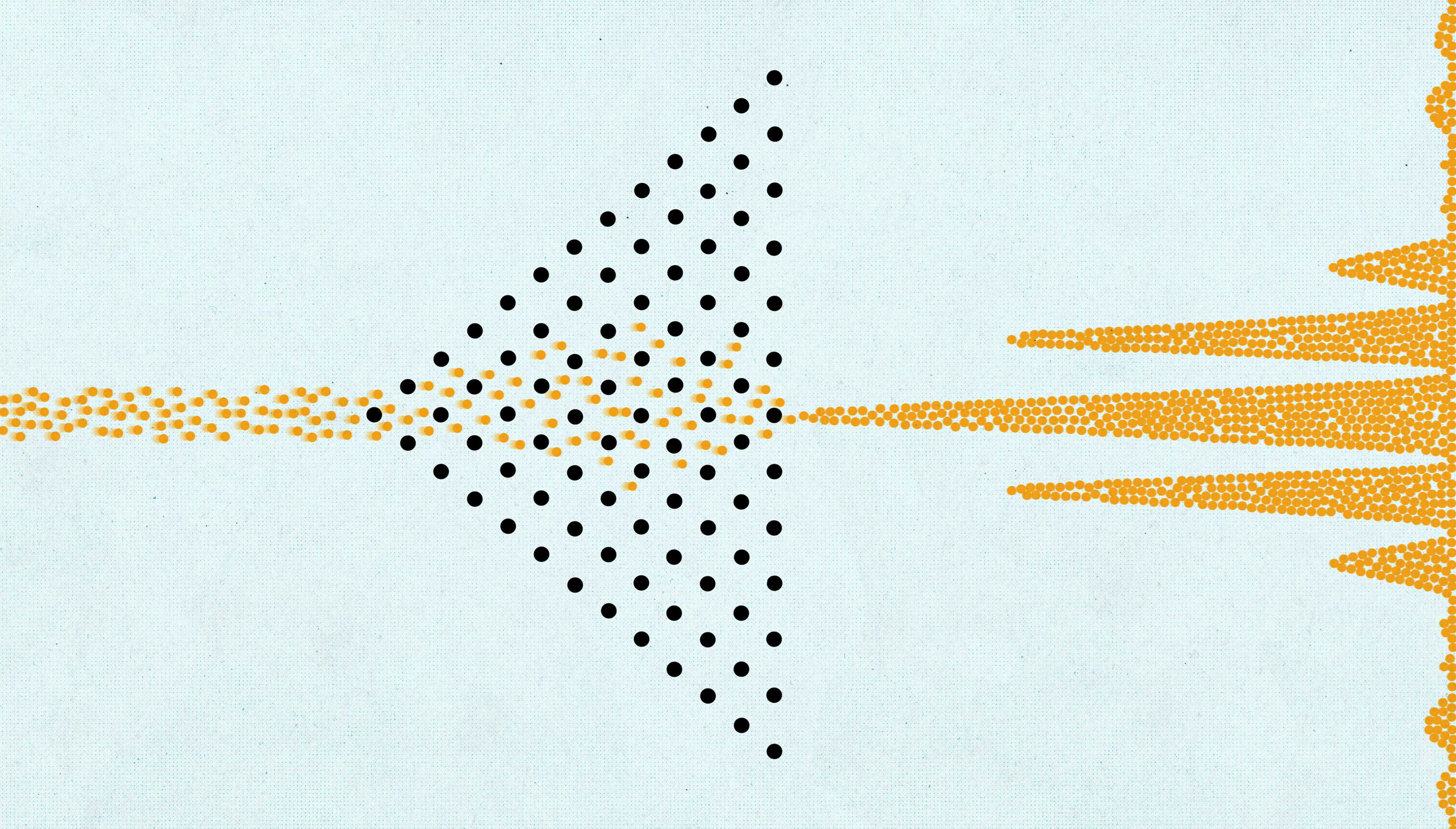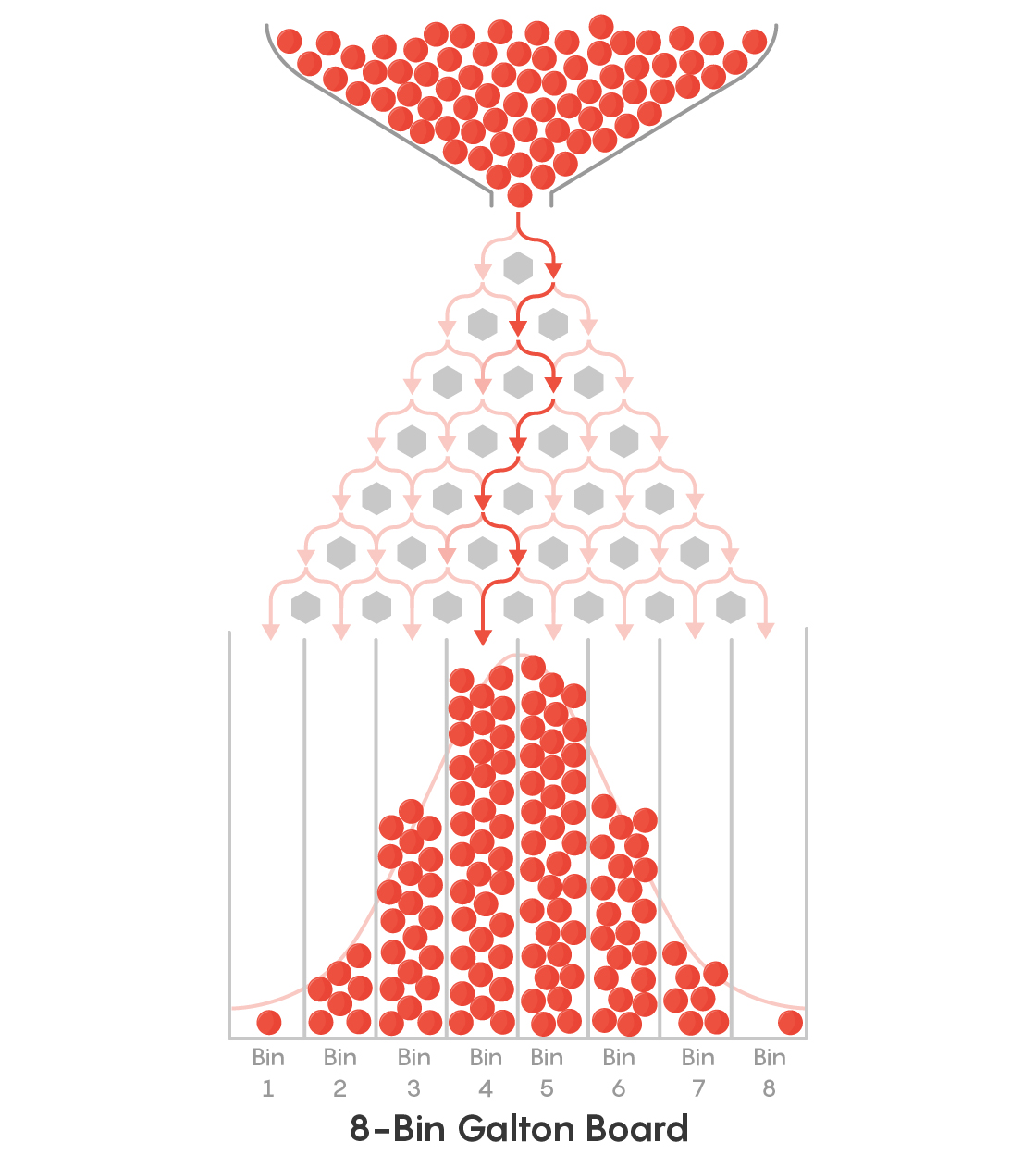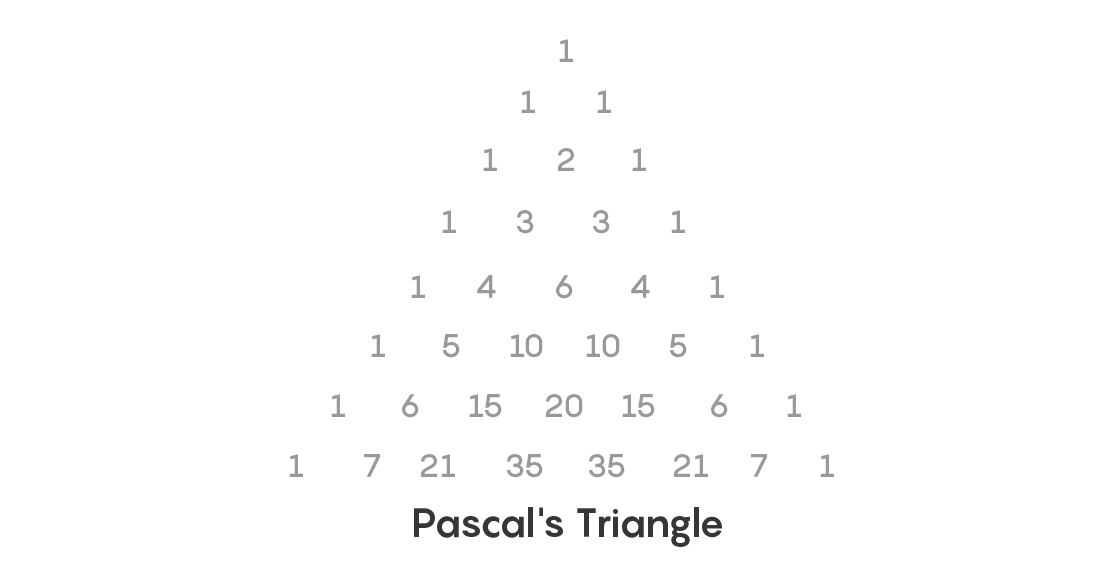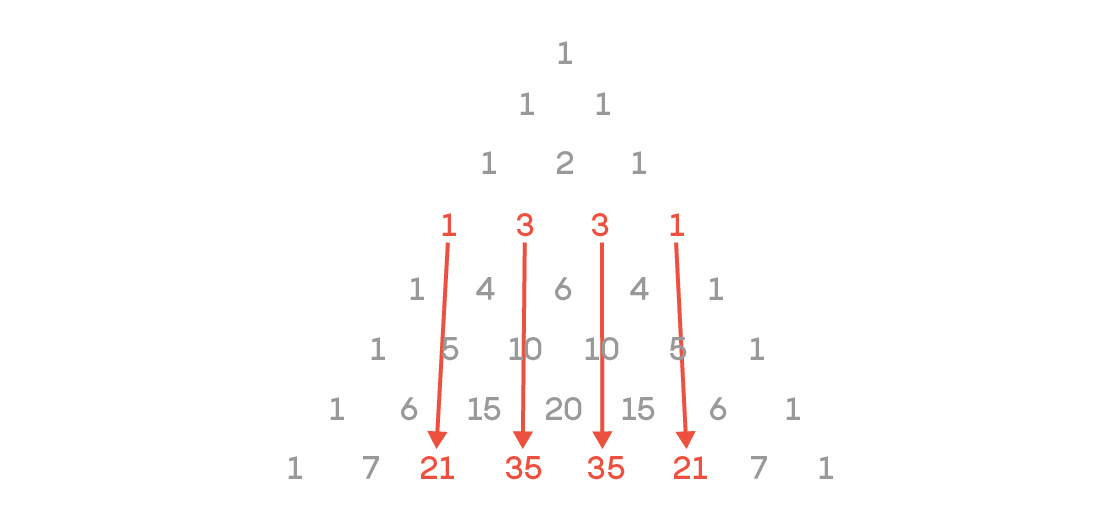How Randomness Can Arise From Determinism

Dan Page for Quanta Magazine
Introduction
Is nature inherently random? According to some interpretations of quantum mechanics, it is, explaining why we can’t precisely predict the motions of single particles. In the famous double-slit experiment (which, as Richard Feynman declared, “has in it the heart of quantum mechanics”), we cannot predict where exactly an individual photon passing through two slits will land on the photo-sensitive wall on the other side. But we can make extremely precise predictions of the distribution of multiple particles, suggesting that nature may be deterministic after all. Indeed, we can predict to many decimal places what the distribution of billions of photons shot at the double slit will look like.
This dichotomy between unpredictable individual behavior and precise group behavior is not unique to quantum mechanics. There are many novel and strange aspects of quantum physics — particle-wave duality, quantum entanglement and the uncertainty principle, for instance — but probabilistic equations that give precise predictions of ensemble behavior are not among them. We see this phenomenon wherever very large numbers of like elements interact, such as in thermodynamics, where we can predict collective measures like heat and pressure with precision, though we may be completely ignorant about the paths taken by individual molecules.
In our August puzzle, we debated whether randomness or determinism lies at the heart of quantum mechanics, which I characterized as team B (Niels Bohr) versus team E (Albert Einstein). Team B sees the unpredictability of particle behavior as evidence that at the fundamental level of the universe, determinism is replaced by intrinsic, objective randomness. Team E contends that this randomness is merely a sign of our ignorance of a deeper level of deterministic causation.
This month, we explore the behavior of a mechanical device that vividly illustrates how deterministic laws can produce probabilistic behavior. It’s known as the Galton board, or the bean machine or quincunx. As seen in the picture below, the Galton board consists of an upright board with rows of pegs that create multiple paths along which marbles can roll from top to bottom. Marbles are dropped at the top and take either the rightward or leftward path when they encounter a peg. In the traditional version of the device, each of these paths is equally probable at every peg. At the bottom, the marbles accumulate in a set of bins.

Lucy Reading-Ikkanda/Quanta Magazine
The expected number of marbles collected in each bottom bin from left to right after all possible paths are traversed once is given by the binomial distribution. The total number of marbles required for a complete set of trials for a Galton board with bins in place of the nth row is given by 2n−1 — for the top row (when the marble drops into the device and you have a bin instead of the first peg), it is 21-1 = 20 = 1, for row 2, it is 21 = 2, for row 3 it is 22 = 4, and so on. Since there’s a 50-50 chance of the marble going left or right at each peg, the numbers in each bin in the bottom row give the same distribution you would expect from n − 1 coin flips. Thus, a Galton board with bins in place of the fifth row can be represented by four coin flips, and you would need to do 16 trials of four coin flips for a complete set (corresponding to 16 marbles). In the collecting bins, you would have marbles corresponding to one instance of zero heads (and four tails), four instances of one head, six instances of two heads, four instances of three heads, and one instance of four heads. (Note that 16 trials is the minimum number of trials that can yield the above ratios. In practice, the more trials you do, the closer the results will approximate these ideal ratios.)
For a Galton board with any given number of rows, the number of different paths a marble can take to reach a bin placed at a given row is exactly equal to the corresponding number in Pascal’s triangle (as shown below). As the number of rows and bins is increased, the expected distribution of balls in the bins approximates the bell curve. Thus, computer simulations of large Galton boards can visually illustrate the central limit theorem, which states that the theoretical limit of the binomial distribution is the bell curve (aka the Gaussian distribution) as the number of bins approaches infinity.

Of course, it is not necessary that the pegs divert the balls to their left or right with equal probability. We can construct the pegs to get any probability from 0 to 1. This allows the Galton board to simulate binomial distributions that may be skewed to the left or right, as well as many other kinds of distributions. And that brings us to our first puzzle.
Puzzle 1: The Bins Demand Equality!
Imagine that you have a Galton board of the kind shown in the picture above. This one has bins in place of the 8th row and possesses traditional equal-probability pegs. You wish to modify it so that each of the bins at the bottom will collect an equal number of marbles. You know that you will have to replace some of the traditional pegs with new ones that direct the marbles unequally to their left or right side. You can choose pegs that direct a marble entirely to their left, entirely to their right, or in any proportion between these two extremes.
What is the smallest number of pegs you will need to replace, and with what left-right ratios, in order to achieve the goal of complete equality for all bins?
As a bonus question, can you derive and justify a formula that generalizes the above result to a Galton board of any size? (For one with an odd number of bins at the bottom, the difference in the number of marbles when you compare any two bins after a complete set of trials should be 1 or 0. Thus, for a five-row Galton board, with a complete set of 24 = 16 marbles, the number of marbles allowed in each of the five bottom bins needs to be either 3 or 4.)
In a traditional Galton board, the marble distribution in every row is highest in the center and falls off toward the ends. In the next puzzle, let’s try to make two peaks.
Puzzle 2: Twin Peaks
As in Puzzle 1, start with a traditional Galton board, but this time one with nine bins at the bottom. You have to modify it by changing the minimum number of pegs so that the distribution of marbles at the bottom is as follows: 0, x, 2x, x, 0, x, 2x, x, 0, where x represents 1/8 of the total number of marbles.
In a traditional Galton board, the final position of an individual marble as it moves from about the middle row to the bottom is not very predictable — it could end up in any of the bins. As you may have noticed, the modifications we made in the above two puzzles result in the Galton boards becoming more deterministic than they were before. We can now predict the path of the individual marble much more accurately. Let’s try to quantify this tendency.
Puzzle 3: Predicting Individual Behavior

In this picture, consider a marble to have had a “drift” of 0 if it was in one of the four positions in row 4 and ended up in the corresponding position in row 8, as shown by the arrows. If it ended up in any other bin, the value of the drift is equal to the square of the distance from the expected bin. Thus, if a marble started from the leftmost position in row 4 and ended up in the bin marked 7, one bin to the left of its expected bin, its drift is 12 = 1. If it ended up in the leftmost bin in the final row (marked 1), then its drift would be 22 = 4. The mean drift for a particular Galton board is the average drift of all the marbles as they move from row 4 to row 8.
What is the average drift of:
1. The original Galton board.
2. The modified Galton board from Puzzle 1.
3. The modified Galton board from Puzzle 2.
In a Galton board in the classical world, the randomness at each peg — the choice of whether the marble goes left or right — might either be engineered in, using some randomizing analog mechanism at each peg, or it might come from subtle factors, including, perhaps, the exact initial location of the marble, its angle of motion, or the manner in which the marble bounces off the subtle imperfections of the peg’s surface. These are all deterministic factors with a clear causal chain that decides which way the marble goes. The path selected seems random to us only because of our ignorance of these details. (Some Galton boards do away with indeterminacy altogether and have engineered gates that flip their state after each interaction, so that they force the next marble down the other path.)
Let’s apply this to the philosophical question involving randomness and determinism, as team E would interpret it. As with the Galton board, there must be analogous, albeit subquantal, causal processes that determine where a particular photon will end up on the far side of a double-slit experiment. We may never be privy to what these processes are, but they have to exist. Perhaps this has no practical significance, but it implies that the probabilistic Schrödinger equation is just an ensemble equation like the binomial equation describing a traditional Galton board. If that’s the case, then the equation has no predictive value for an individual particle. This undercuts the basis of the many-worlds interpretation, which assumes that the entire universe is being cloned countless times whenever a tiny particle makes a trivially different choice. If the equation merely describes ensemble behavior, this scenario is quite unnecessary. It’s as if the universe splits every time a marble goes left or right in a Galton board, just because we are ignorant of the exact details of the marble-peg interaction. What’s your response to this simple explanation, team B?
Happy puzzling — and philosophizing.
Editor’s note: The reader who submits the most interesting, creative or insightful solution (as judged by the columnist) in the comments section will receive a Quanta Magazine T-shirt or one of the two new Quanta books, Alice and Bob Meet the Wall of Fire or The Prime Number Conspiracy (winner’s choice). And if you’d like to suggest a favorite puzzle for a future Insights column, submit it as a comment below, clearly marked “NEW PUZZLE SUGGESTION.” (It will not appear online, so solutions to the puzzle above should be submitted separately.)
Note that we may hold comments for the first day or two to allow for independent contributions by readers.
Update: The solution has been published here.



